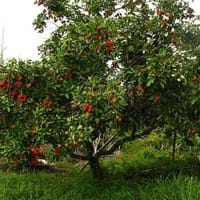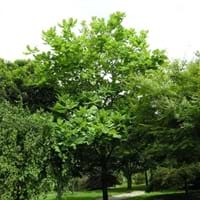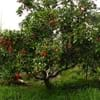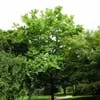Life Span
Perennial
Perennial
Origin
Southeastern Asia, China
North America, United States, Mid-Atlantic United States, Southeastern United States, Central United States, South-Central United States
Types
Brewster, Mauritius, Hak ip
Not Avaialble
Habitat
Subtropical climates, Tropical regions, Warmer regions
Woodland Garden Secondary
USDA Hardiness Zone
10-11
5-8
Sunset Zone
H1, H2, 21, 22, 23, 24
4, 5, 6, 7, 8, 9, 14, 15, 16, 17, 18, 19, 20, 21
Habit
Oval or Rounded
Oval or Rounded
Flower Color
Light Yellow, Yellow green
White
Flower Color Modifier
Bicolor
Bicolor
Fruit Color
Red, Magenta
Rose
Leaf Color in Spring
Red, Dark Green, Copper
Green, Light Green, Silver
Leaf Color in Summer
Dark Green
Dark Green, Silver
Leaf Color in Fall
Dark Green
Yellow, Yellow green, Brown, Silver
Leaf Color in Winter
Dark Green
Not Available
Leaf Shape
Long Linear
Oblong
Plant Season
Spring, Summer, Fall, Winter
Spring, Summer, Fall, Winter
Sunlight
Full Sun, Partial Sun
Full Sun
Type of Soil
Loam, Sand
Clay, Loam
The pH of Soil
Acidic, Neutral
Acidic, Neutral
Soil Drainage
Well drained
Average
Bloom Time
Early Spring
Early Summer
Tolerances
Not Available
Not Available
Where to Plant?
Ground
Ground
How to Plant?
Seedlings, Stem Planting, Transplanting
Seedlings
Plant Maintenance
High
Medium
Watering Requirements
Requires regular watering
Needs watering once a week
In Summer
Lots of watering
Lots of watering
In Spring
Twice a week
Moderate
In Winter
Regular watering required
Average Water
Soil pH
Acidic, Neutral
Acidic, Neutral
Soil Type
Loam, Sand
Clay, Loam
Soil Drainage Capacity
Well drained
Average
Sun Exposure
Full Sun, Partial Sun
Full Sun
Pruning
Prune after harvesting, Prune lower leaves, Prune to control growth
Remove dead or diseased plant parts
Fertilizers
All-Purpose Liquid Fertilizer, Fertilize after blooming period
Balanced organic fertilizer
Pests and Diseases
Aphids, fungus, Leaf curl
Bacterial leaf spot, Canker, Powdery mildew, Spot anthracnose
Plant Tolerance
Not Available
Drought
Flowers
Insignificant
Showy
Flower Petal Number
Single
Single
Foliage Texture
Medium
Coarse
Foliage Sheen
Glossy
Matte
Attracts
Not Available
Scale Insects, Snails
Allergy
Itchiness
Mild Allergen
Aesthetic Uses
Showy Purposes
Formal Garden, Showy Purposes
Beauty Benefits
Not Available
Not Available
Environmental Uses
Not Available
Air purification
Medicinal Uses
anti-allergy, Bone strength, Digestive disorders, Heart problems
Odontalgic, Stomachic
Part of Plant Used
Fruits
Bark
Other Uses
Used As Food, Used as Ornamental plant
Used for flooring, cabinet making
Used As Indoor Plant
No
No
Used As Outdoor Plant
Yes
Yes
Garden Design
Edible, Feature Plant, Foundation, Fruit / Fruit Tree, Hedges, Shade Trees, Topiary / Bonsai / Espalier, Tropical
Feature Plant, Shade Trees
Botanical Name
LITCHI chinensis
MAGNOLIA macrophylla
Common Name
Litchee, Litchi, Lychee
Bigleaf Magnolia, Large-leaved Cucumber Tree, Umbrella Tree
In German
Lychee
Umbrella Tree
In French
Lychee
Umbrella Tree
In Spanish
Lychee
Árbol de paraguas
In Greek
λίτσι
Umbrella Tree
In Portuguese
lichia
Árvore de guarda-chuva
In Polish
Lychee
Umbrella Tree
Phylum
Tracheophyta
Magnoliophyta
Class
Magnoliopsida
Magnoliopsida
Order
Sapindales
Magnoliales
Family
Sapindaceae
Magnoliaceae
Genus
Litchi Sonn
Magnolia
Clade
Angiosperms, Eudicots, Rosids
Angiosperms, Magnoliids
Tribe
Not Available
Not Available
Subfamily
Sapindoideae
Magnolioideae
Importance of Lychee and Umbrella Tree
Want to have the most appropriate plant for your garden? You might want to know the importance of Lychee and Umbrella Tree. Basically, these two plants vary in many aspects. Compare Lychee and Umbrella Tree as they differ in many characteristics such as their life, care, benefits, facts, etc. Every gardener must at least have the slightest clue about the plants he wants to plant in his garden. Compare their benefits, which differ in many ways like facts and uses. The medicinal use of Lychee is anti-allergy, Bone strength, Digestive disorders and Heart problems whereas of Umbrella Tree is Odontalgic and Stomachic. Lychee has beauty benefits as follows: Not Available while Umbrella Tree has beauty benefits as follows: Not Available.
Compare Facts of Lychee vs Umbrella Tree
How to choose the best garden plant for your garden depending upon its facts? Here garden plant comparison will help you to solve this query. Compare the facts of Lychee vs Umbrella Tree and know which one to choose. As garden plants have benefits and other uses, allergy is also a major drawback of plants for some people. Allergic reactions of Lychee are Itchiness whereas of Umbrella Tree have Mild Allergen respectively. Having a fruit bearing plant in your garden can be a plus point of your garden. Lychee has showy fruits and Umbrella Tree has showy fruits. Also Lychee is not flowering and Umbrella Tree is not flowering . You can compare Lychee and Umbrella Tree facts and facts of other plants too.





